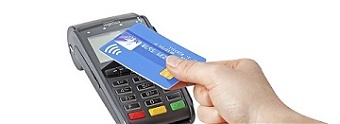Banks, Estonia, Financial Services
International Internet Magazine. Baltic States news & analytics
Friday, 26.04.2024, 01:21
Estonia: 75% of terminals updated to accept new EUR 50 contactless payment limit
 Print version
Print version |
|---|
"The new limit has been set at the central systems' level, but requires the updating of parameters in card payment terminals as well. As of noon today [Tuesday], approximately 75 percent of active payment terminals have accessed the central systems to load the new parameters and enforced the new limit. Work on enforcing the new limit across the entire terminal fleet is underway," Katrin Taliharm, managing director of the Estonian Banking Association, told LETA/BNS.
The new limit takes effect from March 23 until the emergency situation declared by the government comes to an end. Those who are able to link their bank card to Apple Pay or Google Pay, will be able to also pay for purchases exceeding the 50-euro limit, the Banking Association said.
Contactless payments represented 32% of all card payments made in Estonia, and they were supported by 87% of payment terminals. Altogether 77% of bank cards issued in Estonia include the contactless payment option.
Around 85% of payments are made within the current limit of 25 euros. When the limit is increased to 50 euros, it should allow for 95% of card payments to be carried out without contact. Considering that in the current emergency situation, one is advised to go shopping as seldom as possible, the average cost of a shopping basket has likely increased.
People can still set a contactless payment limit on their bank card. People still need to enter their PIN occasionally when they exceed a certain number of transactions or total sum of payments. Here, there may be differences from bank to bank because the conditions for using card-based payment limits and contactless mobile apps vary from bank to bank.
- 25.01.2021 Как банкиры 90-х делили «золотую милю» в Юрмале
- 29.12.2020 В Rietumu и в этот раз создали особые праздничные открытки и календари 2021
- 29.12.2020 Lithuanian president signs 2021 budget bill into law
- 29.12.2020 Number of new companies registered in Estonia up in 2020
- 29.12.2020 Президент Литвы утвердил бюджет 2021 года
- 28.12.2020 Рынок недвижимости Эстонии осенью начал быстро восстанавливаться
- 28.12.2020 Tartu to support students' solar car project
- 28.12.2020 Owner of Kunda Nordic Tsement to install full-scale CCS facility in Norway
- 28.12.2020 New Year Cards and Calendars of Rietumu Bank presented
- 23.12.2020 В 2019 году выросли прибыль и оборот Eesti Pagar








 «The Baltic Course» Is Sold and Stays in Business!
«The Baltic Course» Is Sold and Stays in Business!

